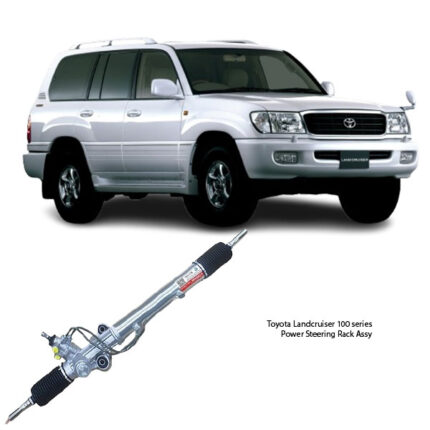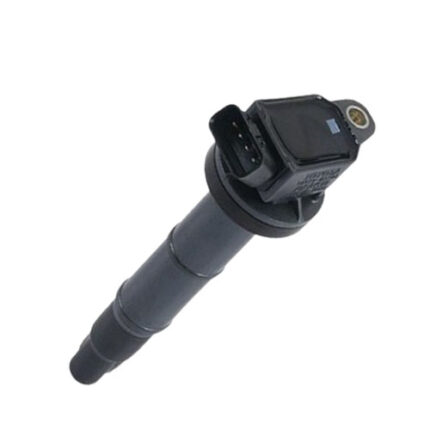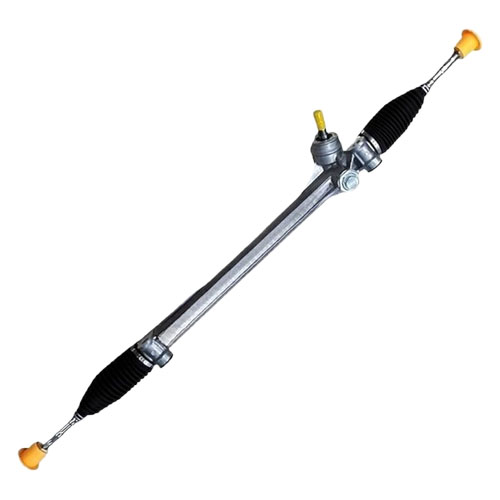-12%
Get Toyota Harrier ACA3# Power Steering Rack RH 4551042060 in Kenya
The Power Steering Rack (RH) is a crucial component in a vehicle’s steering system, specifically designed to assist in smooth and controlled steering. The RH designation refers to its position on the right-hand side of the vehicle, typically used in left-hand drive (LHD) vehicles, where the steering wheel is on the left, but the power steering rack extends towards the right.
The power steering rack allows drivers to turn the wheels with minimal effort by using hydraulic or electric assistance. Without it, steering would be physically demanding, especially at low speeds.
This guide will explore how the Right-Hand Power Steering Rack functions, the different types, signs of failure, causes of wear, maintenance tips, and replacement procedures.
2. Functions of the Right-Hand Power Steering Rack
A properly working RH Power Steering Rack plays several key roles in a vehicle’s steering system:
2.1. Steering Assistance
- Converts the rotational movement of the steering wheel into linear motion, allowing the front wheels to turn.
- Uses hydraulic or electric assistance to reduce the effort required to steer the vehicle.
2.2. Stability and Control
- Ensures smooth and precise steering input, enhancing overall vehicle control.
- Works with other suspension components to maintain steering alignment.
2.3. Shock Absorption
- Helps absorb road shocks and vibrations, preventing sudden jolts from transferring to the steering wheel.
2.4. Reducing Driver Fatigue
- By reducing the physical force needed to turn the wheels, the power steering rack makes driving more comfortable, particularly in urban traffic or while parking.
2.5. Wheel Alignment Support
- Maintains proper toe alignment, preventing excessive tire wear and ensuring straight tracking.
3. Types of Power Steering Racks
Power steering racks are classified based on their assistance mechanism:
3.1. Hydraulic Power Steering (HPS)
- Uses pressurized hydraulic fluid to assist in turning the wheels.
- Relies on a power steering pump driven by the engine.
- Requires regular maintenance of the power steering fluid.
- Common in older and heavy-duty vehicles.
3.2. Electric Power Steering (EPS)
- Uses an electric motor and sensors instead of hydraulic fluid.
- More fuel-efficient as it doesn’t rely on an engine-driven pump.
- Less maintenance required but electronic failures can be costly.
- Found in most modern cars.
3.3. Electro-Hydraulic Power Steering (EHPS)
- A combination of hydraulic and electric systems.
- Uses an electric motor to power the hydraulic pump.
- Provides fuel efficiency while maintaining hydraulic steering feel.
- Found in some performance and luxury vehicles.
4. Symptoms of a Failing Right-Hand Power Steering Rack
When the RH Power Steering Rack begins to fail, you may notice the following issues:
4.1. Difficulty Turning the Steering Wheel
- Increased resistance when turning, especially at low speeds.
- Could indicate low power steering fluid, a failing pump, or rack damage.
4.2. Steering Wheel Play or Loose Steering
- Excessive free play or looseness in the steering wheel.
- May cause difficulty in maintaining a straight driving path.
4.3. Fluid Leaks
- Hydraulic power steering racks rely on fluid pressure.
- Leaks from the steering rack seals can cause performance loss.
4.4. Clunking or Knocking Sounds
- Worn-out internal components may create knocking or clunking noises, especially over bumps or during turns.
4.5. Uneven Tire Wear
- A malfunctioning rack can affect wheel alignment, leading to excessive wear on one side of the tires.
4.6. Steering Wheel Not Returning to Center
- After turning, the wheel should naturally return to center.
- If it fails to self-center, the rack could be binding.
4.7. Vehicle Pulling to One Side
- A damaged rack might cause the vehicle to drift or pull to the right or left.
- This can be confused with a wheel alignment issue.
5. Causes of Power Steering Rack Failure
Several factors can contribute to premature failure of the RH Power Steering Rack:
5.1. Normal Wear and Tear
- Over time, components inside the steering rack, such as bushings, seals, and gears, wear down.
5.2. Contaminated Power Steering Fluid
- Dirty or contaminated fluid can lead to clogging and increased friction inside the rack.
5.3. Power Steering Fluid Leaks
- Leaks reduce hydraulic pressure, making it harder to steer.
- Common sources include worn seals, hoses, or the steering pump.
5.4. Rough Driving Conditions
- Frequent driving on bad roads, potholes, or hitting curbs can accelerate wear.
5.5. Excessive Heat and Pressure
- Long periods of aggressive driving generate high temperatures, causing seals to deteriorate.
5.6. Electrical Failures (For EPS Systems)
- In electric power steering, failures can occur due to sensor malfunctions or wiring issues.
6. Maintenance Tips for a Long-Lasting Power Steering Rack
To prolong the lifespan of your Right-Hand Power Steering Rack, follow these tips:
✔ Check Power Steering Fluid Levels Regularly – Ensure fluid levels are adequate to avoid excessive wear.
✔ Use the Recommended Fluid Type – Using the wrong fluid can damage internal components.
✔ Inspect for Leaks Periodically – Look for fluid drips under the vehicle and fix leaks immediately.
✔ Avoid Steering to Full Lock – Holding the steering wheel at full lock for too long strains the system.
✔ Replace Power Steering Fluid as Needed – Flush out old fluid to remove contaminants.
✔ Drive Smoothly – Avoid hitting potholes and curbs, which can damage the rack.
✔ Schedule Regular Wheel Alignments – Helps reduce uneven stress on the rack and tires.
7. Right-Hand Power Steering Rack Replacement Guide
Replacing a power steering rack is a complex job best handled by professionals. However, here’s a general overview of the process:
7.1. Tools Needed
- Jack and jack stands
- Wrenches and socket set
- Power steering fluid
- Tie rod puller
7.2. Steps to Replace the RH Power Steering Rack
- Lift the Vehicle – Secure the car on jack stands.
- Disconnect the Battery – If dealing with an electric rack, disconnect power.
- Drain Power Steering Fluid – Prevents fluid spillage during removal.
- Remove Tie Rods and Steering Column Connection – Detach the tie rods and intermediate shaft.
- Unbolt the Steering Rack – Carefully remove mounting bolts.
- Install the New Rack – Position and secure the new rack.
- Reconnect Tie Rods and Fluid Lines – Ensure all connections are tight.
- Refill and Bleed the Power Steering System – Remove air bubbles from the hydraulic system.
- Test the Steering System – Check for smooth operation and leaks.
8. Conclusion
The Right-Hand Power Steering Rack is essential for providing smooth and responsive steering. A failing rack can lead to steering stiffness, noise, and alignment problems, affecting driving safety.
Regular maintenance, checking for leaks, and using the right power steering fluid can help prolong its lifespan. If symptoms of failure arise, timely repair or replacement is necessary to maintain safe vehicle handling.
Follow us on Facebook for more parts.





